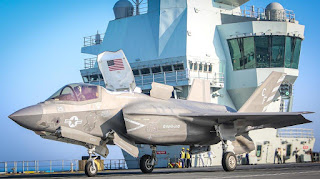Saying Farewell to a Giant - HMS HERMES Final Voyage.

The long story of the aircraft carrier known as HMS HERMES / INS VIRAAT appears to be drawing to a close. On the 30 th of September, baring a miracle last minute intervention, she will be intentionally beached and the scrapping process will begin. This marks the end of a saga which began in 1944 when she was laid down as HMS ELEPHANT, and then commissioned some 15 years later as HMS HERMES. Her life in the Royal Navy was, apart from 1982 relatively uneventful. Indeed she spent much of her career as a carrier that felt distinctly unwanted, having been cited for decommissioning in 1966 as surplus to requirements, she somehow soldiered on as both a strike carrier (carrying about 19 jets) and latterly as an ASW/amphibious carrier with a limited harrier capability. It was really only the Falklands war that preserved her for posterity in the eyes of the public, when as the flagship of the Task Force, she led the successful liberation of the islands. Thereafter she remained in li...



